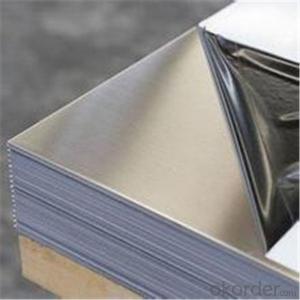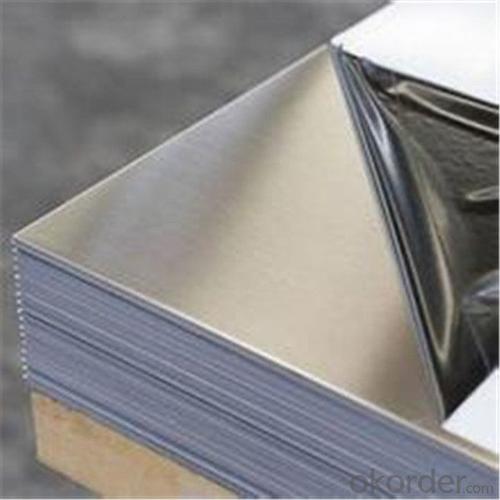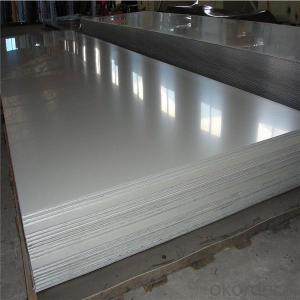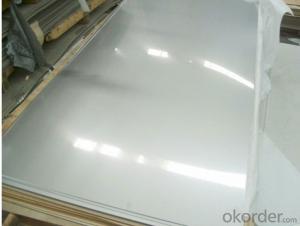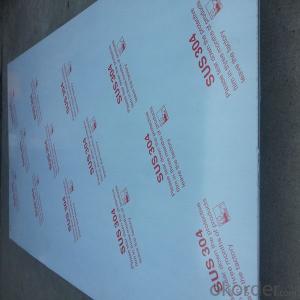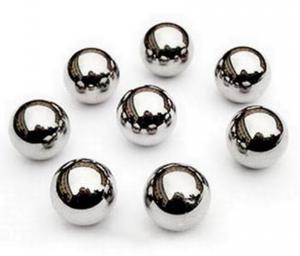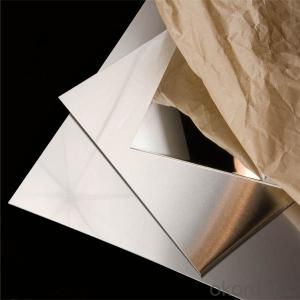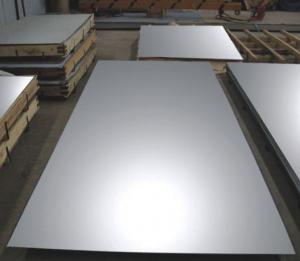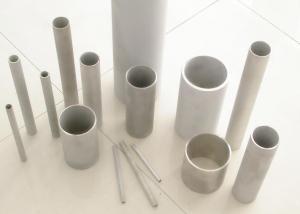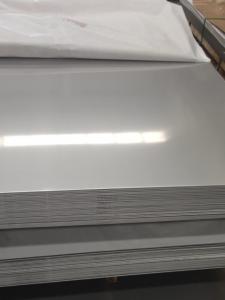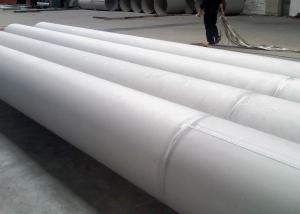304 Stainless Steel Plate 3mm thickness
- Loading Port:
- Shanghai
- Payment Terms:
- TT OR LC
- Min Order Qty:
- 5 m.t.
- Supply Capability:
- 50000 m.t./month
OKorder Service Pledge
OKorder Financial Service
You Might Also Like
Specification
Specifications
304 Stainless Steel Plate 3mm thickness
the same quality with lower price and professional price
fast delivery and stable sup
Specifications
electric galvanized steel coils/sheets
with good quality and competitive price.Quick and reliable delivery
electric galvanized steel coils/sheets
This is regular/normal spangle galvanized steel
1. Product grade: Name: Hot dipped galvanized steel
2. Standard: JIS G3302 SGCC (ASTM A653/CQ, EN10142 DX51D)
3. Thickness of galvanized steel: 0.23mm to 4 mm
4. Normal width of galvanized steel: 100-1250mm
5. Surface treatment of galvanized steel: Chromated or un-chromated, un-oiled or oiled
6. Spanlge of galvanized steel: Large spangle, normal spangle, regular spangle, zero spangle
7. Tolerance of width of galvanized steel: +/-5.00mm
8. Coil weight of galvanized steel: 4 - 10MT
9. ID of galvanized steel: 508mm or 610mm
Price of galvanized steel: FOB, CFR/CFR, CIF
Loading port of galvanized steel: FOB FOSHAN OR SHENZHEN
Payment of galvanized steel: TT OR LC
electric galvanized steel coils/sheets
This is regular/normal spangle galvanized steel
2. 
- Q: What is the corrosion resistance of stainless steel sheets in saltwater?
- Stainless steel sheets have excellent corrosion resistance in saltwater due to their high levels of chromium and nickel, which form a protective oxide layer on the surface. This oxide layer acts as a barrier against the corrosive effects of saltwater, making stainless steel sheets highly resistant to rust and corrosion in marine environments.
- Q: Can stainless steel sheets be used for airport terminals?
- Airport terminals can indeed make use of stainless steel sheets. Stainless steel, being an incredibly adaptable material, offers numerous advantages when employed in airport terminals. Initially, stainless steel boasts corrosion resistance, a crucial feature in a bustling environment like an airport where exposure to moisture and chemicals is commonplace. This characteristic guarantees that the structural integrity and appearance of the stainless steel sheets will endure over time. Furthermore, stainless steel sheets possess durability, enabling them to withstand heavy foot traffic and the wear and tear associated with airport operations. Consequently, they can be utilized for a variety of purposes within the terminal, including walls, ceilings, cladding, countertops, and furniture. Additionally, stainless steel is easy to clean and maintain, making it a hygienic choice for areas with high foot traffic, such as airport terminals. Moreover, stainless steel brings forth an aesthetic appeal that can enhance the overall design of the airport terminal. Its sleek and modern appearance can create a sense of sophistication and elegance. Stainless steel sheets are available in different finishes, such as brushed, polished, or patterned, allowing for customization to meet the desired aesthetic requirements of the terminal. In conclusion, due to their corrosion resistance, durability, ease of maintenance, and aesthetic versatility, stainless steel sheets prove to be a practical and visually pleasing option for airport terminals.
- Q: Can stainless steel sheets be used for countertops?
- Yes, stainless steel sheets can be used for countertops. Stainless steel is a durable and versatile material that is resistant to stains, heat, and bacteria, making it an excellent choice for kitchen countertops. It is easy to clean, maintain, and has a sleek and modern appearance. Stainless steel countertops are commonly used in commercial kitchens but are also becoming increasingly popular in residential settings due to their durability and hygienic properties.
- Q: How do I prevent fingerprints or smudges on stainless steel sheets?
- To prevent fingerprints or smudges on stainless steel sheets, you can try using a microfiber cloth or a soft cotton cloth to wipe the surface regularly. Avoid using abrasive cleaners or scrub brushes that can cause scratches. Additionally, you can use a stainless steel cleaner or a mixture of water and mild dish soap for deeper cleaning.
- Q: What is the weldability of stainless steel sheets?
- The weldability of stainless steel sheets is generally considered to be good. Stainless steel contains a high percentage of chromium, which forms a passive oxide layer on the surface of the metal. This oxide layer provides excellent corrosion resistance and helps prevent the formation of heat-affected zones during welding. However, the weldability of stainless steel can vary depending on the specific grade and thickness of the sheets. Some grades of stainless steel, such as austenitic stainless steels (e.g., 304, 316), are highly weldable and can be easily joined using various welding techniques, including TIG (Tungsten Inert Gas) welding and MIG (Metal Inert Gas) welding. On the other hand, certain grades of stainless steel, such as martensitic or duplex stainless steels, may have lower weldability due to their higher carbon content or different microstructures. These grades often require preheating and post-weld heat treatment to avoid cracking and maintain desired mechanical properties. In addition, the thickness of stainless steel sheets can also affect their weldability. Thicker sheets may require more heat input and specialized welding procedures to ensure proper fusion and avoid distortion. Overall, stainless steel sheets are generally considered to have good weldability. However, it is important to consider the specific grade and thickness of the sheets, as well as the required welding techniques and procedures, to achieve optimal results. Professional guidance and expertise in stainless steel welding are recommended to ensure successful and durable welds.
- Q: Can stainless steel sheets be used for bus shelters?
- Yes, stainless steel sheets can be used for bus shelters. Stainless steel is a durable and corrosion-resistant material, making it suitable for outdoor structures like bus shelters. It can withstand various weather conditions, including rain, snow, and UV rays, without deteriorating or rusting. Stainless steel sheets also provide a sleek and modern appearance, enhancing the overall aesthetic appeal of the bus shelter. Additionally, stainless steel is easy to clean and maintain, ensuring the longevity of the bus shelter.
- Q: Are stainless steel sheets suitable for marine propellers?
- Yes, stainless steel sheets are suitable for marine propellers. Stainless steel is a popular material choice for marine propellers due to its excellent corrosion resistance properties, which is essential in a marine environment where the propeller is constantly exposed to saltwater. The high strength and durability of stainless steel sheets also make them capable of withstanding the harsh conditions of the marine environment, including impacts and vibrations. Additionally, stainless steel has a low magnetic permeability, which helps reduce the formation of biofouling on the propeller, improving its performance and efficiency. Overall, stainless steel sheets are a suitable and widely used material for marine propellers.
- Q: What is the function of a stainless steel plate at the top of the steel chimney?
- Many stainless steel grades, different properties, and in the course of its development has gradually formed several categories. According to the structure of the organization, it is divided into four categories: martensitic stainless steel (including precipitation hardening stainless steel), ferritic stainless steel, austenitic stainless steel and austenitic ferrite duplex stainless steel;
- Q: What is the difference between 304 and 316 stainless steel sheets?
- The main difference between 304 and 316 stainless steel sheets is their composition and corrosion resistance. 304 stainless steel contains 18% chromium and 8% nickel, while 316 stainless steel contains 16% chromium, 10% nickel, and 2% molybdenum. This additional molybdenum in 316 stainless steel improves its corrosion resistance, making it more suitable for use in marine environments or applications exposed to harsh chemicals. Therefore, 316 stainless steel sheets are generally considered more corrosion resistant than 304 stainless steel sheets.
- Q: Are stainless steel sheets resistant to acids?
- Acids don't stand a chance against stainless steel sheets. This remarkable material is famous for its ability to resist corrosion, and that includes acids too. You see, stainless steel contains chromium, which forms a protective layer called a passive film. This film acts like a barrier, preventing acids from reacting with the metal. It's like a superhero shield against a wide range of organic and inorganic acids. Of course, the level of resistance can vary depending on the type of stainless steel. Grades such as 304 and 316 are especially tough against acids, which makes them perfect for industries like chemical processing, food processing, and pharmaceuticals. But let's not forget, even though stainless steel sheets can handle acids pretty well, there are some aggressive acids and highly corrosive environments that can still break through their defenses. So, it's crucial to seek advice from experts and choose the right grade of stainless steel for acid-resistant applications.
Send your message to us
304 Stainless Steel Plate 3mm thickness
- Loading Port:
- Shanghai
- Payment Terms:
- TT OR LC
- Min Order Qty:
- 5 m.t.
- Supply Capability:
- 50000 m.t./month
OKorder Service Pledge
OKorder Financial Service
Similar products
Hot products
Hot Searches
Related keywords
